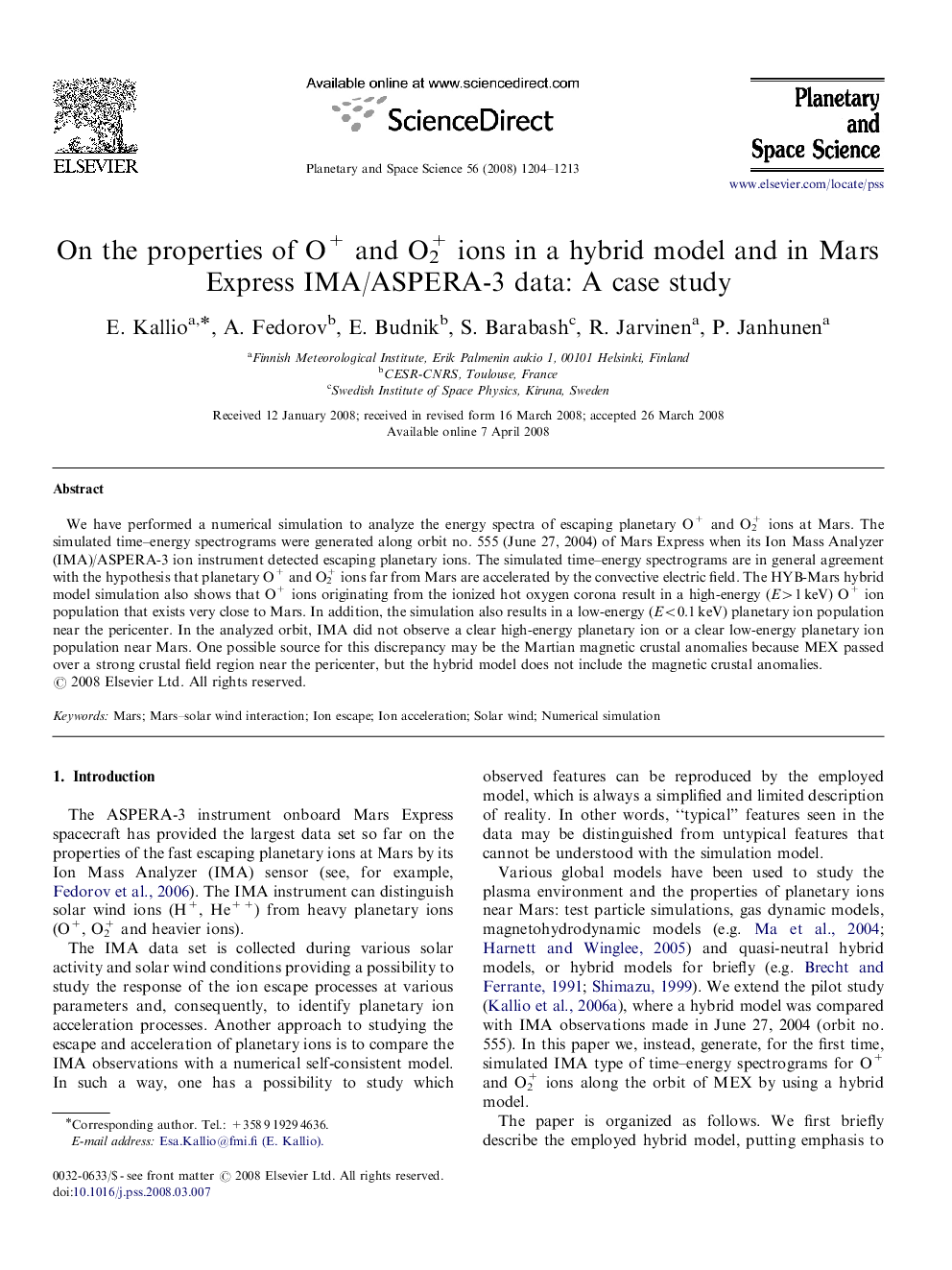| Article ID | Journal | Published Year | Pages | File Type |
|---|---|---|---|---|
| 1782677 | Planetary and Space Science | 2008 | 10 Pages |
Abstract
We have performed a numerical simulation to analyze the energy spectra of escaping planetary O+ and O2+ ions at Mars. The simulated time-energy spectrograms were generated along orbit no. 555 (June 27, 2004) of Mars Express when its Ion Mass Analyzer (IMA)/ASPERA-3 ion instrument detected escaping planetary ions. The simulated time-energy spectrograms are in general agreement with the hypothesis that planetary O+ and O2+ ions far from Mars are accelerated by the convective electric field. The HYB-Mars hybrid model simulation also shows that O+ ions originating from the ionized hot oxygen corona result in a high-energy (E>1Â keV) O+ ion population that exists very close to Mars. In addition, the simulation also results in a low-energy (E<0.1Â keV) planetary ion population near the pericenter. In the analyzed orbit, IMA did not observe a clear high-energy planetary ion or a clear low-energy planetary ion population near Mars. One possible source for this discrepancy may be the Martian magnetic crustal anomalies because MEX passed over a strong crustal field region near the pericenter, but the hybrid model does not include the magnetic crustal anomalies.
Related Topics
Physical Sciences and Engineering
Earth and Planetary Sciences
Geophysics
Authors
E. Kallio, A. Fedorov, E. Budnik, S. Barabash, R. Jarvinen, P. Janhunen,
